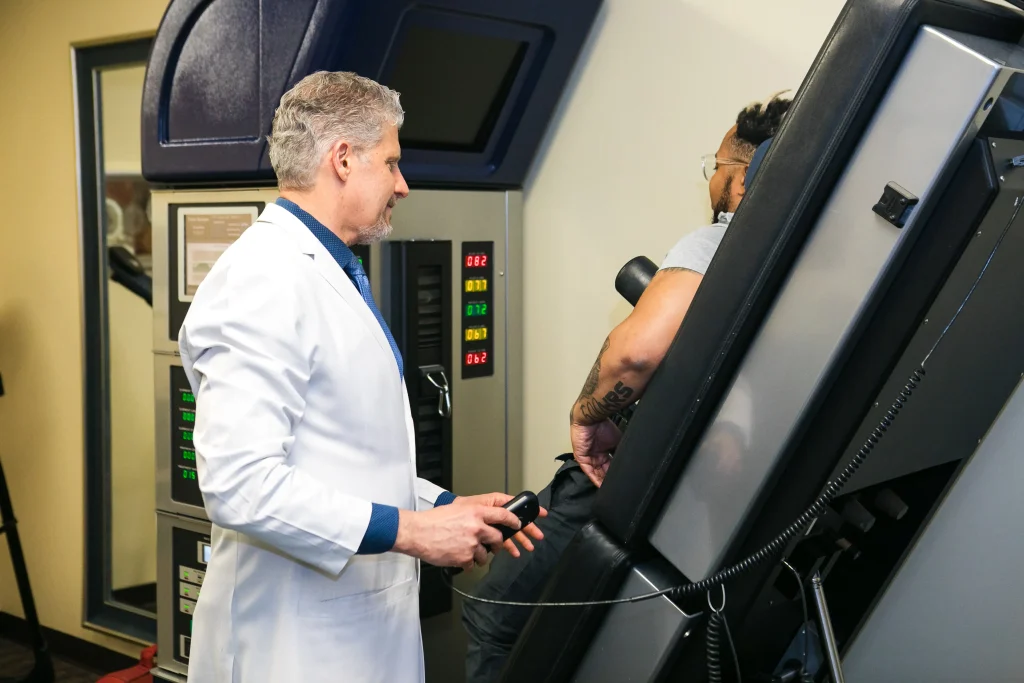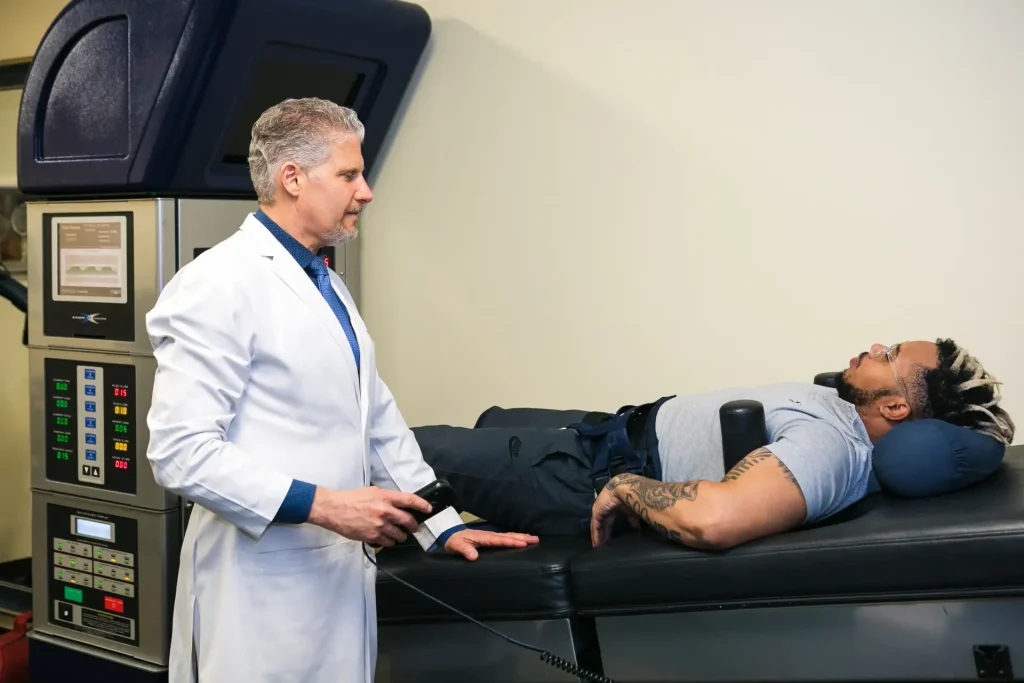Non-Surgical Spinal Decompression
Non-Surgical Spinal Decompression
What is the DRX 9000?
Who is the DRX 9000 for?
- ARE SUFFERING FROM PAIN, NUMBNESS, TINGLING OR WEAKNESS IN THEIR ARMS OR LEGS
- HAVE DEGENERATIVE DISC DISEASE, PROTRUDING, BULGING OR HERNIATED SPINAL DISCS
- HAVE DISCOGENIC PAIN OR SPINAL STENOSIS
- HAVE BEEN TOLD THAT SURGERY OR A LIFETIME OF ADDICTIVE MEDICATIONS ARE THEIR ONLY OPTIONS
There are cushions between the bones in the spine called intervertebral discs. These spinal discs are a cushion with a soft middle (nucleus), surrounded by strong fibers of cartilage (annulus) and are very important for many reasons. Discs allow for movement of the spine. When discs degenerate, the spine becomes less mobile and can start to decay. Intervertebral discs create space between the bones of the spine (vertebrae). Each level of the spine and disc are stacked one on top of the other. This is important because nerves pass through these spaces. If a space around a nerve or spinal cord becomes twisted, stretched or irritated, then nerves can be irritated or pinched. Spinal discs also act like shock absorbers. When the spine moves correctly, the soft center of the disc expands and contracts naturally. When the spine becomes misaligned, discs can become herniated or bulge and if it’s bad enough it might even rupture (burst).
A misalignment is not the only cause of degeneration. Age can also cause spinal discs to become weak and injured . Not only do disc injuries put pressure on nerves, it also causes pain.




